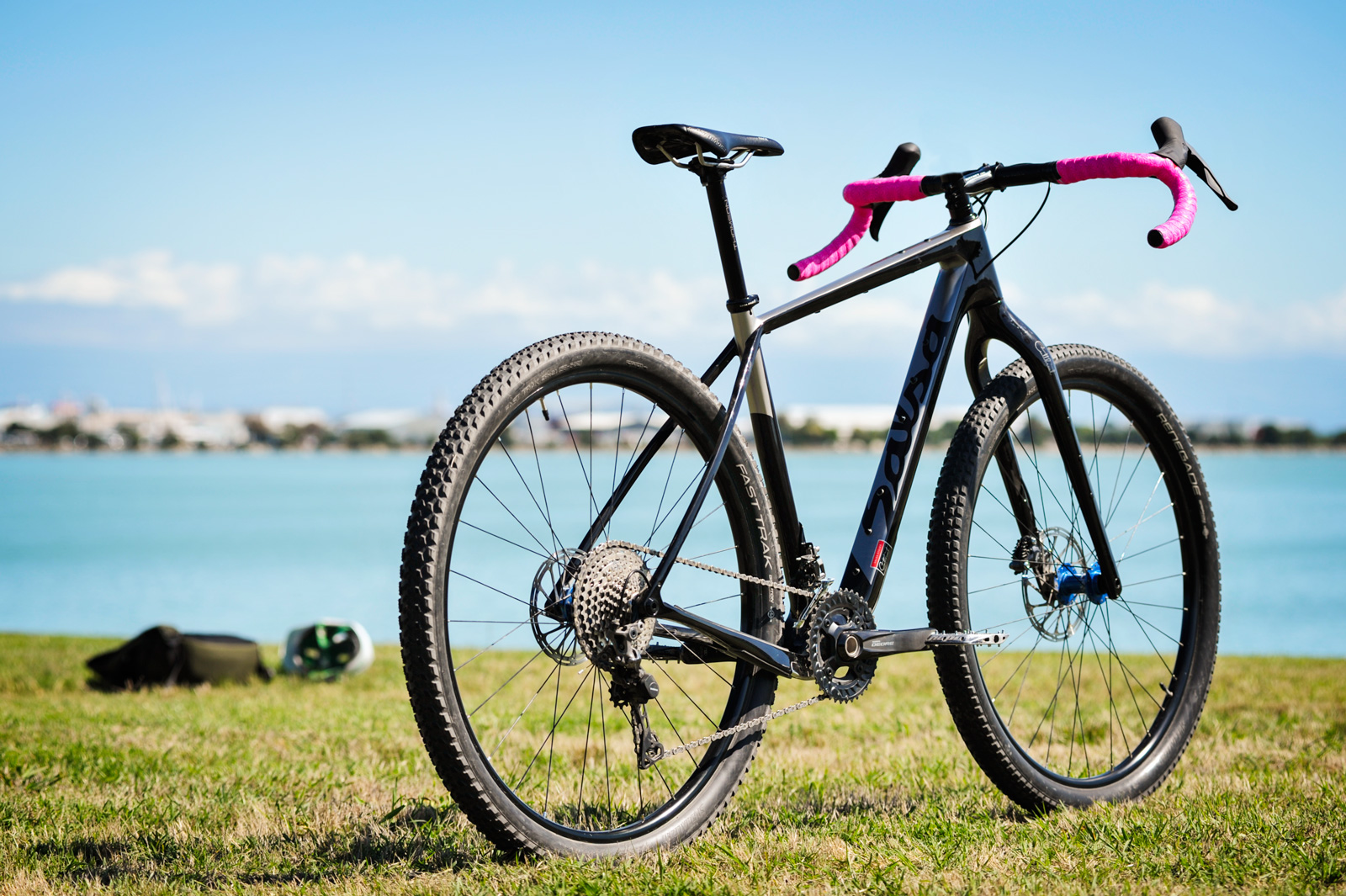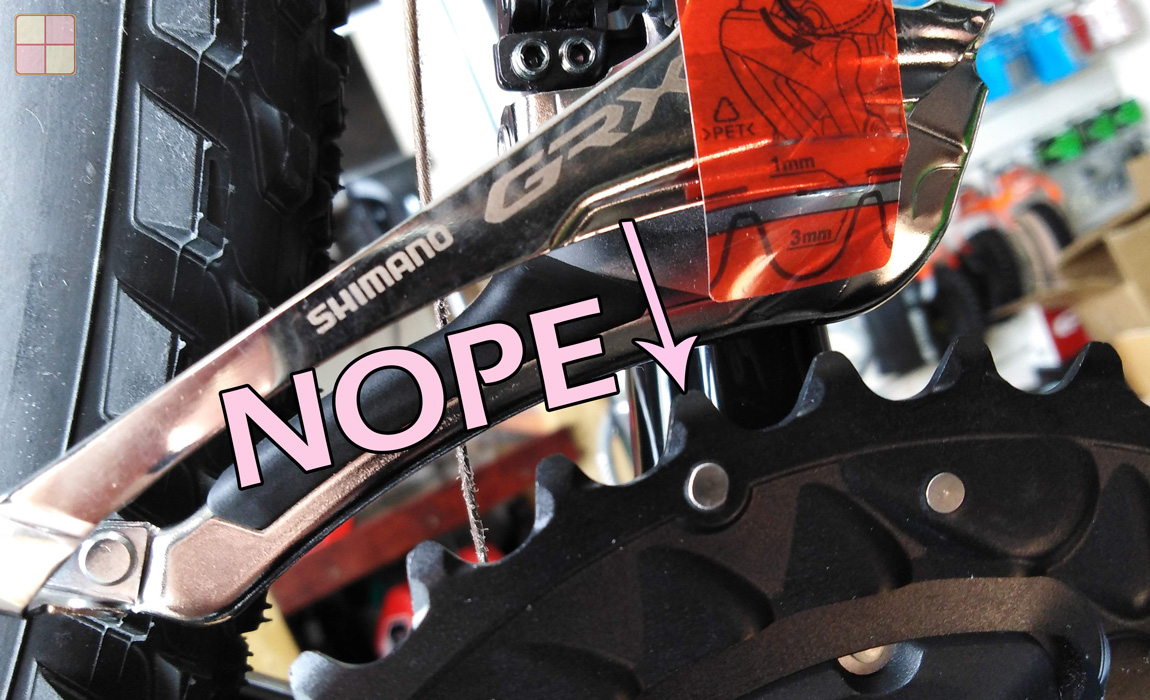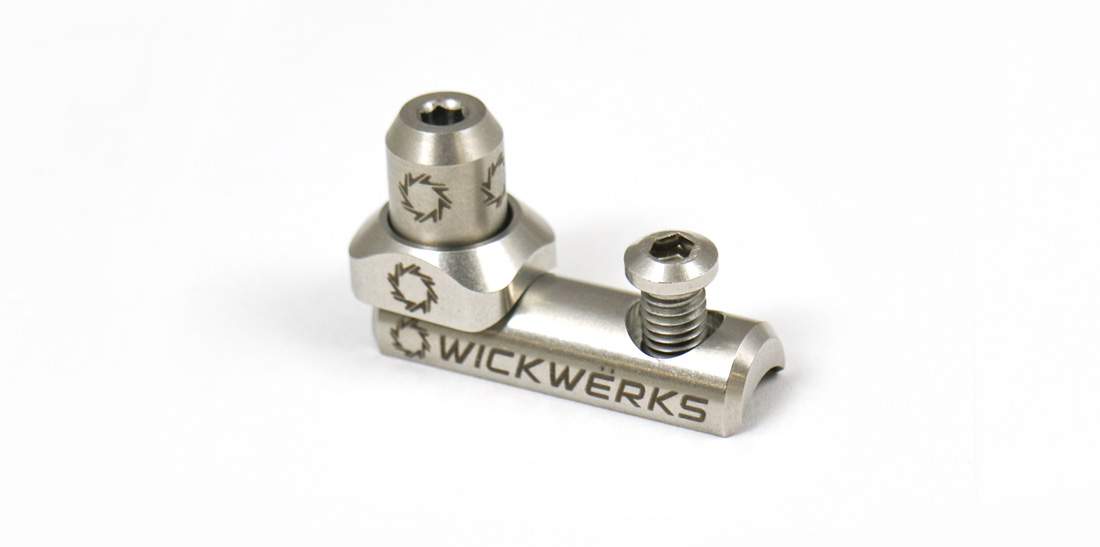Before I ordered the V2 Salsa Cutthroat frameset, I hadn’t given the gearing much thought. I certainly hadn’t looked at the frame specs in any detail but knew from the reviews I’d read that you could run 1x or 2x up front, wide range cassette at the rear, boost rear spacing..all pretty straight-forward.
As it turned out, the drivetrain part of the build would throw up some interesting challenges thanks to the unique combination of ‘standards’ used in the Cutthroat design. Mmm, Standards.
What am I using the Cutthroat for?
Salsa bills their Cutthroat as an Ultra-Endurance bikepacking rig. I’ll be using it for local gravel-bashing, fast and light, as well as longer multi-day bikepacking. Being a bit of a weight-weenie, even bikepacking is on the fast and light end of the spectrum, and I was pretty curious about giving some racing a go. The gearing I chose for the build therefore had to reflect this – tall enough for fast or flat spinning, short enough for grovelling up steep gravel roads carrying a framebag full of cake.
What do I use at the moment?
I’ve been running 1x on my Surly Karate Monkey for some time, with an 11-42T SLX cassette out back. Chainring choice depends on what I’m riding – it’s usually setup with a 36T for day-rides, general gravel-bashing and short bikepacking trips. However, once you get into the hills with a full loaded bike, the 36T becomes a bit of a grunt. I sometimes switch to a 32T but of course run out of gears pretty quick if there’s flat or road sections – inevitable on most multi-day rides.
Gaps between gears with 1x is a common complaint amongst the bikepacking crowd also. A good choice of 2x gearing can certainly help with this as well as provide other benefits to the chainline over a 1x.
What do others use on their V1 Cutthroats?
The V1 Cutthroat is a quite a different design, but nevertheless I was still interested to know what gearing others were running on theirs.
The V1 Cutthroat isn’t boost spaced and uses a High Direct-Mount Front Derailleur. Maximum chainring sizes were stated to be 28/42T but it appears you could run a larger outer ring, as Jay Petervary often did, albeit with a bit of custom-bracketing to raise the Front Derailleur.
A very scientific survey was carried out to see what some other Cutthroat owners (n=2) were running here in NZ:
28/38T with an 11-36 cassette
26/36T with an 11-42 cassette
Road Brifters don’t work particularly well with MTB derailleurs so both ran an inline barrel shifter to fine-tune gears when the Front Derailleur cage-rub got annoying. Both used the bike for loaded bikepacking – sometimes at race pace.
What do the Pro’s use?
Extensive googling also led me to this nugget of intel from Jay Petervary:
The key section is at the bottom of the article:
“That brings us to the future of bikepacking gearing. Jay says his dream would be to have a 30t up front in either a 30/42 or 30/44 with the wide range cassette out back.”
Made sense to me.
Deciding on the Ideal drivetrain
My Cyclocross / Gravel bike is setup with a 40T / 11-40t, so I knew this was suitable for fast local gravel rides. And the 32T on the Surly usually allows me to grovel up all but the steepest of climbs when fully loaded.
So, based on all the above I had a rough idea what I was aiming for with a 2x Chainring setup; something between 28-32T for climbing, 38-42T for faster grinding. Paired with a wide-range cassette, this should give me the variety of gear ratios I wanted with smaller jumps between gears than a 1x setup.
Cutthroat V2 drivetrain Specifications
The design of the drivetrain on the V2 cutthroat is…interesting.
Salsa are calling this ‘Road Boost’ – a mix of MTB standards like the 148mm Boost hub spacing and BB92 bottom-bracket, but with a roady style front derailleur mount that allows larger chainrings than are typically available on modern MTB Cranksets.
For those running a 1x setup, the system works just like any other modern MTB 1x – pick a boost chainring somewhere between ~30T and 40T and pair it with a wide range MTB cassette.
However, 2x setups are where it gets more complicated.
Salsa have two models that come with 2x drivetrains; the GRX 600 and the top-of-the-line GRX 810 Di2. Both of these come with 46/30 Easton chainrings – what Easton call ‘Gravel Rings’ – both mounted to RaceFace MTB crankarms.
With the 11-34 Cassette, that gives a decent range (~ 470%) but is weighted more towards the fast, gravel-racer end of the spectrum than the loaded hill-grovelleurs. With a low gear just over 25 gear-inches, many would struggle on the climbs with a full compliment of gear, food and fluid.
Why Road Boost?
Shifting trends in the MTB world likely influenced the push towards Road Boost, at least in part. The majority of modern MTB’s are setup 1x and options for 2x are pretty limited – particularly if you want anything bigger than a 38T chainring. Compatibility issues between MTB derailleurs and Road brifters make everything a little more complicated, so new designs are required to meet the needs of the gravel and bikepacking crowd.
With Shimano GRX, Easton and FSA introducing wider range ‘Adventure cranksets’ it’s possible to now run much larger chainrings. Note however that you can’t use most of these on the Cutthroat because they’re designed for gravel bikes – most of which are still non-boost and have roady BB spacing!
Therefore, the only option for the V2 Cutthroat appears to be the RaceFace MTB crank arms, paired with Easton’s Gravel Rings as they use the same cinch mounting system. Peter Hall and Joe Mieser from Salsa talk about the drivetrain changes on the V2 Cutthroat in this episode of The Gravel Ride podcast.
Cutthroat V2 Chainring limitations
But what if I’m not intrepid enough for a full-on Adventure crankset?
The 30T Inner ring is fine – this is usually ok for loaded climbing with a wide-range cassette.
But a 46T Outer seems pretty massive for a 29er, particularly one loaded with bikepacking gear. And according to Salsa – 46T is the smallest you can go with the outer ring!
A 46-50T Chainring may make sense for the gravel-racing crowd, but Salsa has the Warbird for this. The Cutthroat is supposed to be for ‘Ultra-endurance bikepacking’ and so you’d expect options for chainrings closer to the 40-44T mark.
Coming from bikes with 36T – 40T chainrings, I imagine only having a 30T or 46T to choose from would often put me in a cross-chained situation too; the spinny 30T up front paired with the smaller cassette cogs, or the whopping big ring and the larger cassette cogs. As I said, I’m just imagining – it might be fine and I just need to spend more time with the Thighmaster.
The limiting factor for the outer rings is the Braze-on Front Derailleur mount. Unfortunately running a smaller chainring is supposedly not possible, because you cannot get the derailleur low enough on the mount to achieve the 1-3mm clearance required between the derailleur cage and the chainring. You could do it, but you’d likely shoot the chain over the top of the chainring if this gap was much larger.
Ideally Salsa could have just made the slot longer in the braze-on mount, allowing a bigger range of chainrings. Instead, hacks are required.
Now, if only there was a way to lower the front derailleur..
The Cutthroat’s front derailleur mount is bolted to the frame in 3 places – a custom bracket that didn’t look very movable. It didn’t look like there was enough spare meat on the bracket to extend the slot with a dremel either.
An afternoon at the local recycling centre sifting through tubing was semi-fruitful – I found enough options that matched the radius of the curved face on road derailleurs. Another afternoon of whittling produced a couple of usable prototypes but my fabrication skills are far too shite to create a reliable solution.
Convinced there must be some existing solution, I rummaged around on the internets until I found what I was looking for.
Enter the Wickwërks Fit Link!
The Missing link
“The Fit Link is an adapter for mounting a braze-on style front derailleur to and below a bicycle frame braze-on tab to accommodate smaller front chainrings.”
Sounds relevant!
Designed for Juniors racing as an alternative to running Juniors cassettes, the Fit Link allows you to run standard cassettes with smaller chainrings, maintaining the gearing rules for Juniors Road racing.
The Fit Link lowers the FD by between 8.8mm and 15.9mm, which after a bit of maths gave me confidence my derailleur cage would be close enough to use a smaller outer chainring in the 38-42T range.
The Crankset
The final issue to overcome was finding a suitable MTB crankset.
Apart from the aforementioned Gravel rings (which are too big for my liking), finding a suitable 2x crankset or chainrings in 11-spd world was proving difficult.
10-spd chainrings work fine with 11-spd drivetrains so this is where I focussed next. Older 2x cranksets like Shimano’s M785 or SRAM’s GXP had suitable chainring ranges, but were designed pre-boost so wouldn’t have an ideal chainline.
Fast-forward to the solution: a Shimano Triple crankset with the inner chainring removed. The Deore M6000 ticked all the boxes, 22-30-40 chainrings would become a 30-40 double giving me my climbing gear and my grinding gear. Triple cranksets have a chainline of 50mm (measured to the middle ring – my ‘inner’ 30T). The Outer ring, where I’d be spending most of my time, is therefore pretty close to the Boost chainline of 52mm!
Putting it all together – the Adventure-Lite Drivetrain
While I knew all of my cunning plans should work in theory, I’d have to wait until the parts and frame arrived to find out for sure. There was always the risk that there was some random design feature to discover at the last minute that threw all of the above out the window.
Thankfully when it came to build-day, setting everything up was reasonably straight-forward (although setting up Shimano’s 11-spd Front derailleurs is quite a pfaff anyway).
We removed a couple of chainlinks and adjusted limit-screws and whatnot and it all seems to work rather well! The final list of parts is below:
| Item | Component | Mass (grams) |
|---|---|---|
| Crankset | Shimano M6000-3 | 732g |
| Bottom Bracket | Shimano XT BB-MT800-PA | 68g |
| Cassette | Shimano SLX 11-42 | 477g |
| Front Derailleur | Shimano FD-RX810-F | 94g |
| Rear Derailleur | Shimano RD-RX812 | 276g |
| Chain | Shimano HG-701 – 114 links | 265g |
| Gadget | Wickwerks Fit-link | 18g |
| Brifters x2 | Shimano GRX ST-RX810 | 588g |
Note also that I’m using the RX812 GRX Rear derailleur which is designed for 1x with 11-42t cassettes. The other GRX Rear derailleur, the RX810 version, supposedly only works with a maximum cassette sprocket of 34t, but has the higher chainwrap capacity of 40T. This is the version fitted on Salsa’s 2x models.
The RX812 only has a chainwrap capacity of 31T, so shouldn’t work with my setup which has a 41T chainwrap:
(40-30)+(42-11) = 41
As mentioned above it all seems to work just fine and although the 40T/42t combo is a bit of a strain, it still works. I’d never be using this gear combination anyway so I’m not bovvered.
The Gear Range works out at 508% and with 29 x 2.2″ tyres gives a gear-inch range of 20.8 – 106.
Foibles
One point to note on the Front Derailleur. Shimano’s Braze-on Front Derailleurs incorporate a 2mm support bolt, hidden inside the body of the derailleur. This is supposed to be butted up against the frame (or a tiny stick-on plate for carbon frames) to prevent the cage moving out of alignment under shifting.
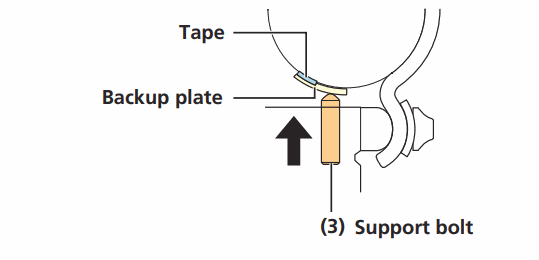
The Fit-link is pretty small but still moves the Front derailleur both down and across towards the back of the seat-tube, probably by about 4-5mm.
With the fit-link in place, there’s no way the support bolt will make contact with the frame, or Salsa’s ‘braze-on’ mount.
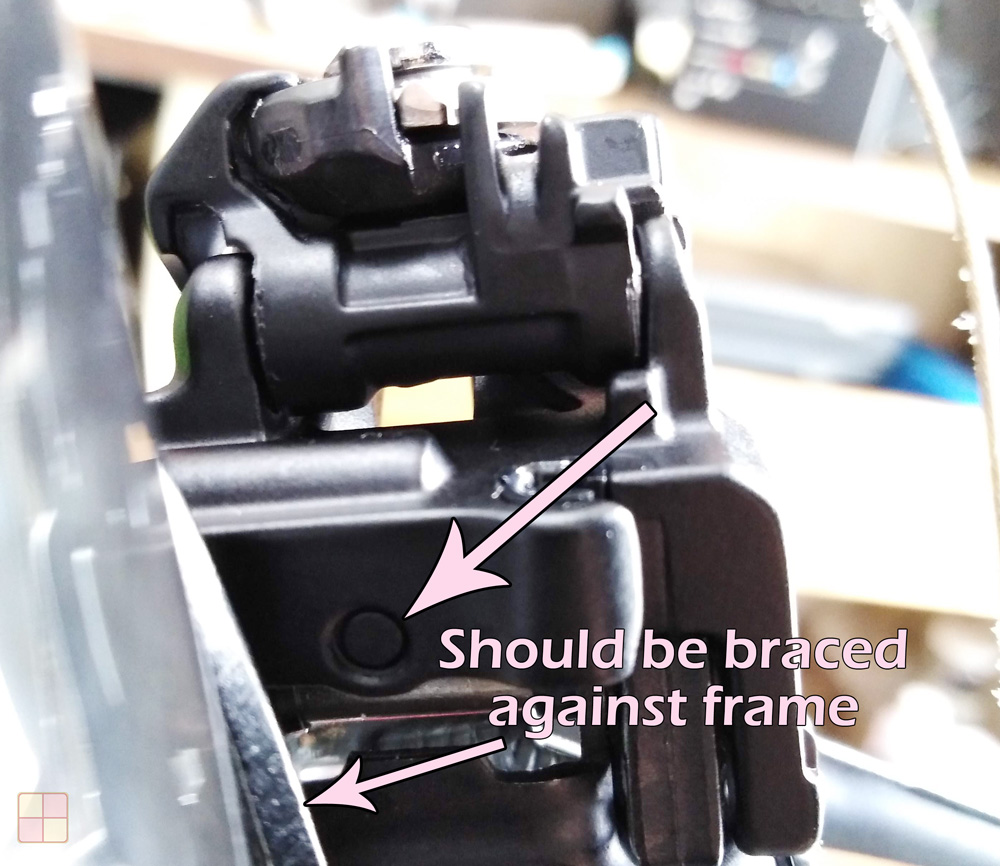
However, I’m not that confident the support bolt would make good contact even without the fit-link in place. It may touch the ‘braze-on’ plate (which is bolted onto the Cutthroat frame), but would likely be towards the rear on the curved section of plate that wraps around the seat-tube.
Note that I’m guessing here from trying to eyeball it and I can’t be bothered to take it all apart to check and re-setup the derailleur.
At the time of writing, I’ve probably only ridden ~200km before the global super-virus shut down gravelling here in New Zealand. Everything worked fine so far but time will tell if this support bolt is actually important.
If any readers have a stock 2x Cutthroat, I’d love to see if, and where, that support bolt contacts the derailleur bracket. Let me know in the comments (pics or it doesn’t happen).
For more detail and images of the build and the Salsa Cutthroat gearing, take a look at this post.
Big Thanks to Nik at Nelson Cycle Tech for sourcing parts and patiently supervising me while I took two whole days to put together this bike! Nik can help with custom bike builds, bikepacking hacks and gear, but specializes in making your suspension supple AF.

